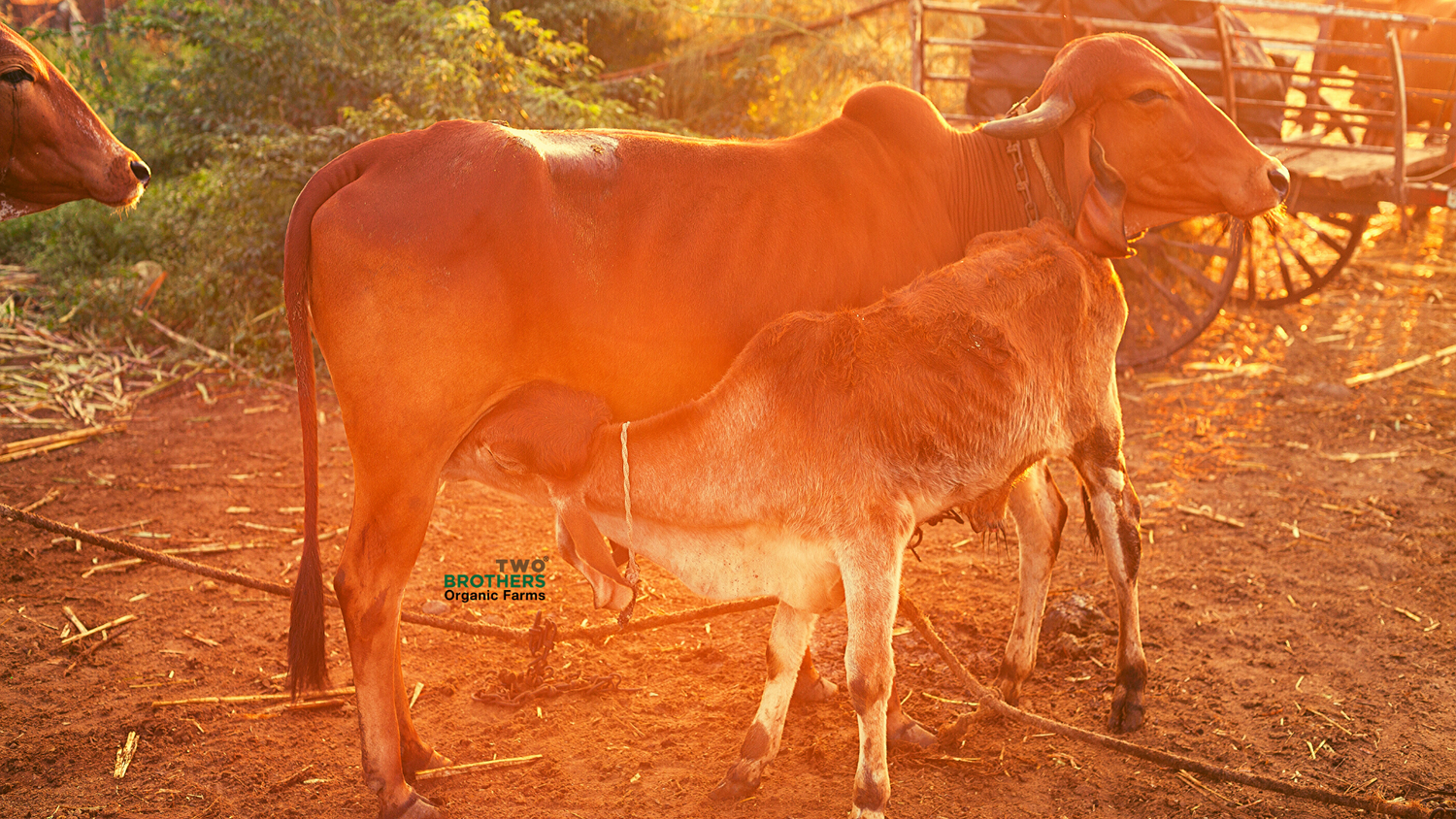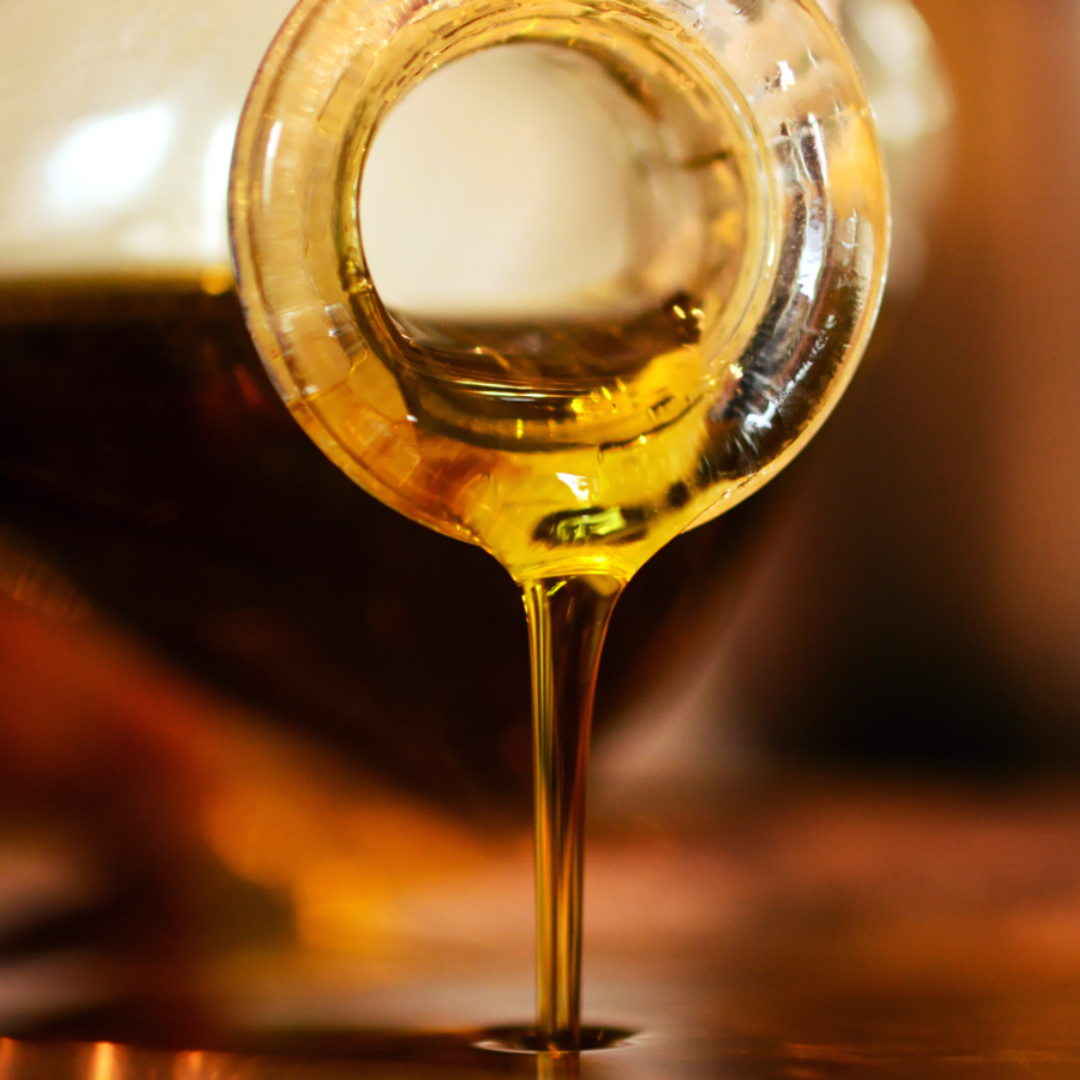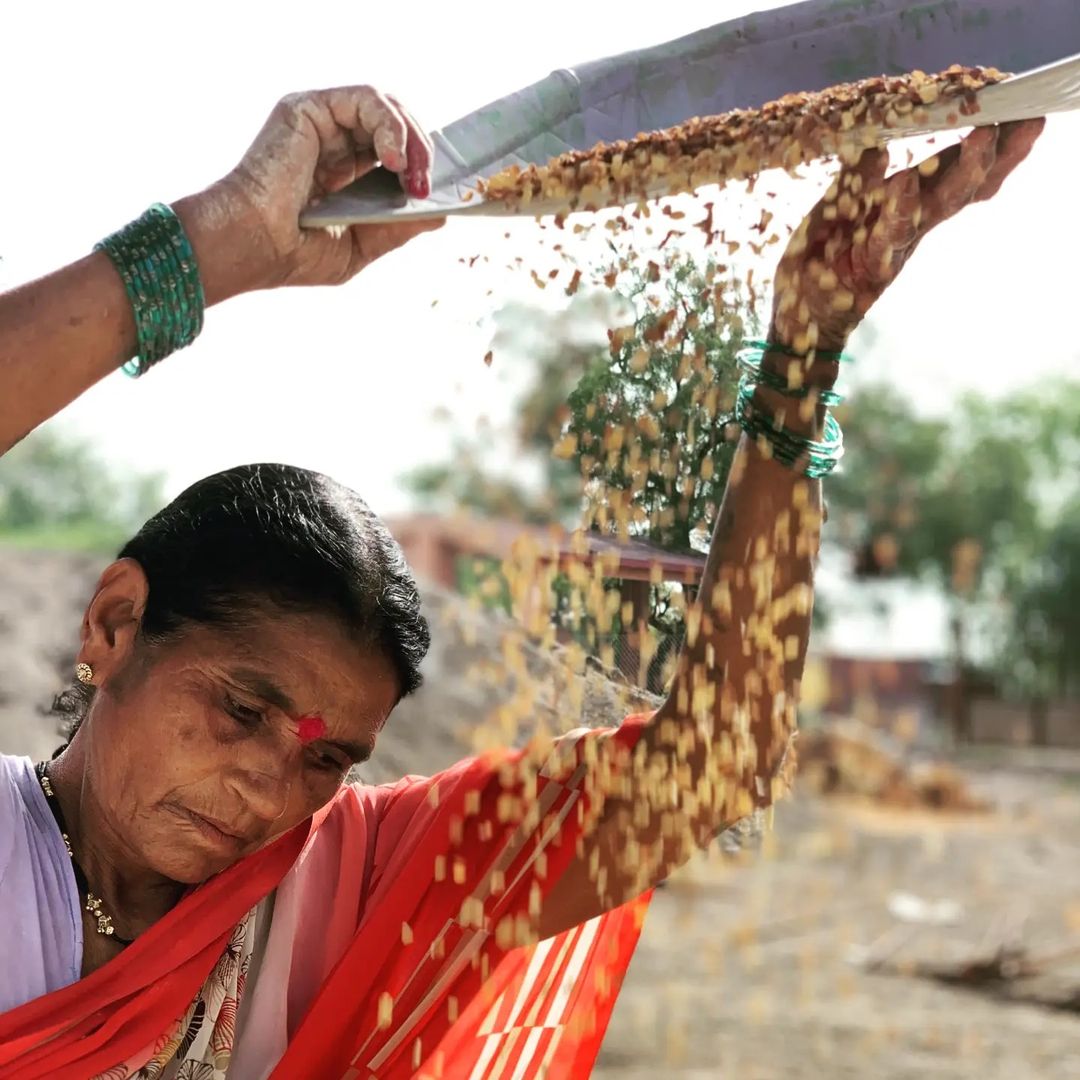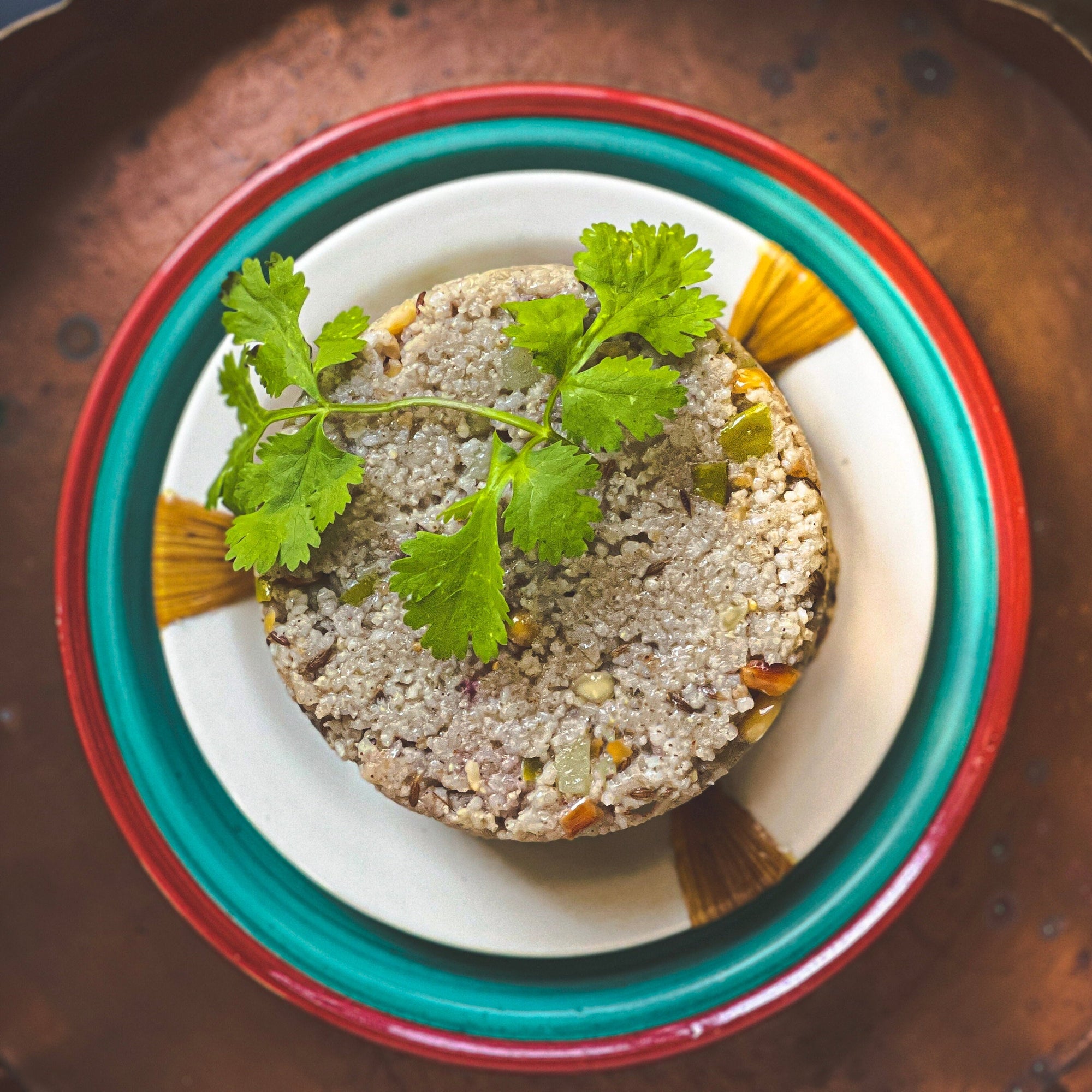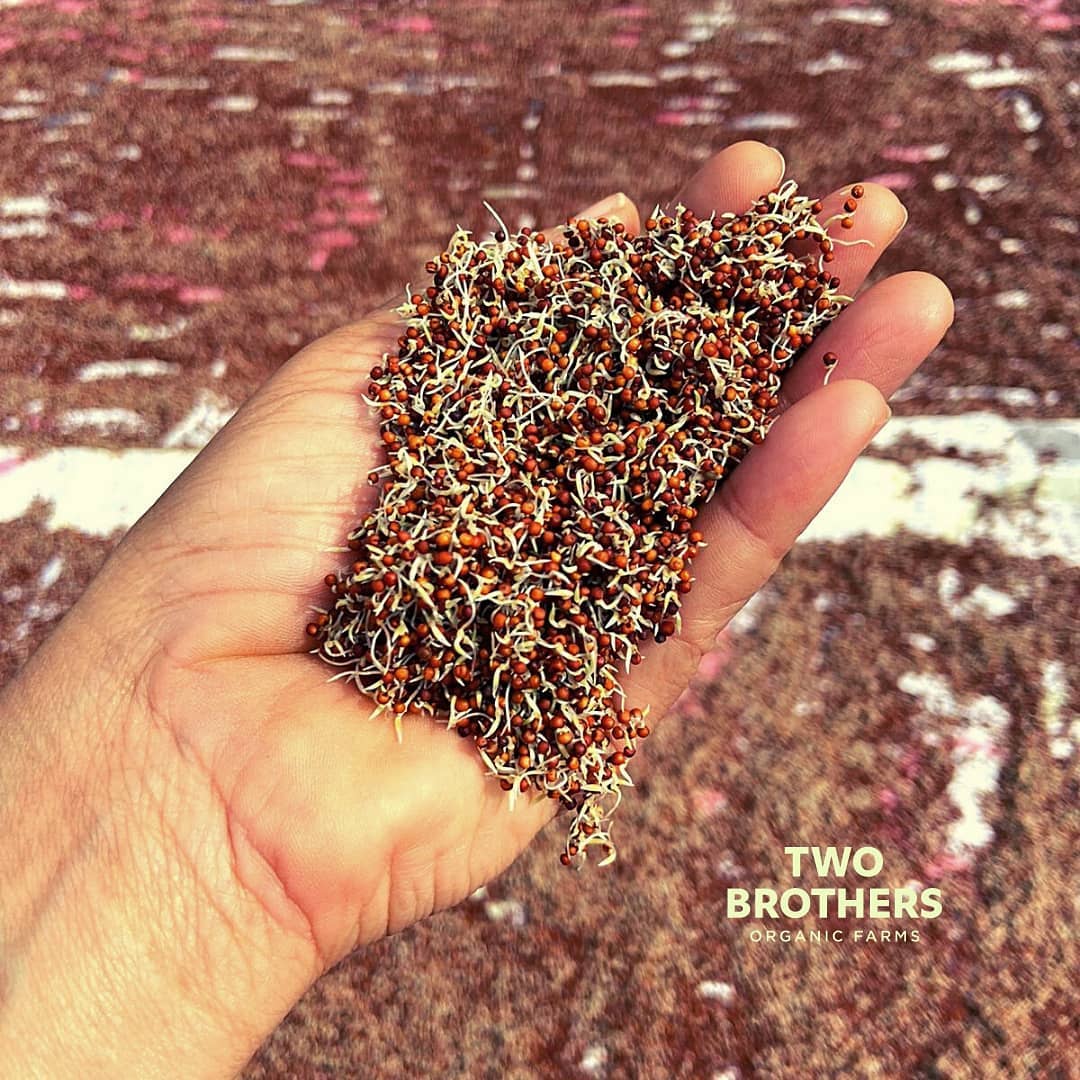Panchagavya, derived from the Sanskrit words "Panch" meaning "five" and "Gavya" meaning "cow," is an ancient Indian concoction that holds immense significance in traditional Indian culture, healthcare systems, and agricultural practices. It is made from five key ingredients: cow ghee, cow dung, cow urine, curd, and milk. Panchagavya has been used for centuries in traditional Indian clinical practices and Ayurveda as a natural remedy for various ailments and as a plant growth promoter in agriculture.
In the Vedic dharma, the cow is revered as "Gomata" or the motherly nurturer. The cow is considered sacred and is believed to possess cosmic energy that emanates positive vibrations. According to Ayurveda, our body comprises the five elements: space, air, fire, earth, and water. Imbalances in these elements can lead to poor health.
Panchagavya is believed to restore balance and promote overall well-being by providing essential nutrients and bioactive compounds.
Panchagavya is also gaining recognition for its potential in sustainable living practices, as it offers eco-friendly solutions for various aspects of life. From nutrition to environmental conservation, Panchagavya presents a holistic approach to leading a healthier and more sustainable lifestyle.
Understanding Panchagavya: An Introduction
Panchagavya is a unique formulation that harnesses the natural healing properties of cow ghee, cow dung, cow urine, curd, and milk. Each component of Panchagavya offers distinct health benefits and contributes to the overall efficacy of the concoction.
- Cow Dung (Gomay): A readily available and natural source of beneficial microbes, dung acts as a bio-fertilizer. These microbes improve soil fertility by promoting the decomposition of organic matter, leading to enhanced nutrient availability for plants. Gomay also possesses pesticidal properties, deterring insects and pests.
- Cow Urine (Gomutra): Gomutra is believed to be a natural disinfectant and fungicide. Studies suggest it can inhibit the growth of certain fungi and bacteria that harm plants. Moreover, Gomutra contains hormones and enzymes that might stimulate plant growth.
- Cow Milk (Goksheer): A rich source of essential nutrients like calcium, magnesium, and lactose, milk can contribute to soil health. The lactose in milk feeds beneficial soil microbes, promoting their growth and activity.
- Cow Ghee (Sarpighee): Ghee, clarified butter, is a concentrated source of fatty acids. These fatty acids can coat plant leaves, creating a protective barrier against water loss and insect infestation.
- Cow Curd (Dahi): Curd, fermented milk containing beneficial bacteria like lactobacilli, can enrich soil health. These bacteria aid in breaking down complex organic compounds into simpler forms, making them readily available for plant uptake.

The Science Behind Panchagavya
The science behind Panchagavya lies in understanding the chemical composition and biological properties of the ingredients. Each component of Panchagavya contributes unique elements that work synergistically to promote health and agricultural benefits.
The chemical composition of Panchagavya includes fatty acids, enzymes, and a diverse microbial population. These elements play a crucial role in various biological processes, including digestion, nutrient absorption, and immune system regulation. The presence of beneficial microorganisms in Panchagavya enhances soil fertility, promotes plant growth, and protects against harmful pathogens.
Scientific research and clinical studies have shed light on the therapeutic potential of Panchagavya, validating its traditional usage in Ayurveda and traditional Indian clinical practices. The remarkable properties of Panchagavya demonstrate the ancient wisdom embedded in this unique concoction.
Panchagavya in Agricultural Practices
Panchagavya plays a significant role in enhancing agricultural practices, particularly in the areas of soil fertility, plant growth, and organic farming. Its natural composition and beneficial microorganisms make it an excellent alternative to synthetic fertilizers and pesticides.
Enhancing Soil Fertility and Plant Growth
Panchagavya's potential to improve soil health and promote plant growth is a key area of interest for sustainable agriculture. The organic matter in Panchagavya acts as a natural fertilizer, releasing essential nutrients like nitrogen, phosphorus, and potassium over time. This sustained release of nutrients can benefit plant growth throughout the growing season.
Furthermore, the diverse microbial population introduced by Panchagavya plays a crucial role. These microbes help break down complex organic matter in the soil, making it readily available for plant uptake. They also contribute to nutrient cycling, ensuring a constant supply of essential elements for plants.
Organic Farming and Pest Control
The increasing concern about the environmental impact of chemical fertilizers and pesticides has spurred interest in organic farming methods. Panchagavya, with its natural pest-repellent properties and ability to enhance soil fertility, emerges as a potential solution.
The components of Panchagavya, particularly cow dung and urine, may deter insects and other pests from attacking crops. This can reduce the reliance on synthetic pesticides, promoting a more sustainable agricultural approach. Additionally, Panchagavya's ability to improve soil health can create a more resilient ecosystem, potentially reducing pest problems.

Panchagavya's Therapeutic Applications
Panchagavya has long been used in traditional medicine for its therapeutic properties. It is an integral part of traditional Indian clinical practices and Ayurveda, offering a natural and holistic approach to health and well-being.
Traditional Medicine and Healing Properties
Panchagavya has been used in traditional Indian clinical practices and Ayurveda for centuries due to its remarkable healing properties. It is considered a powerful elixir that promotes holistic well-being and restores balance to the body and mind.
In traditional medicine, Panchagavya is used in various forms, including medicated ghee, herbal preparations, and topical applications. It is believed to have potent antioxidant, antimicrobial, and anti-inflammatory properties, making it effective in treating a wide range of health conditions.
Panchagavya is particularly valued for its role in promoting digestion, detoxification, and immune function. It supports the body's natural healing processes and enhances overall vitality. In Ayurveda, Panchagavya is considered a valuable tool for maintaining health, preventing diseases, and promoting longevity.
The healing properties of Panchagavya are deeply rooted in the principles of Ayurveda and traditional Indian clinical practices. Its natural composition and multifaceted benefits make it a valuable addition to traditional medicine.
Panchagavya in Daily Life
Panchagavya can be incorporated into daily life for its numerous benefits. From nutrition to environmental impact, Panchagavya offers a holistic approach to leading a healthier and more sustainable lifestyle.
In daily life, Panchagavya can be consumed as a nutritional supplement, with cow milk and ghee providing essential nutrients and promoting overall well-being. It can also be used in skincare and personal care products, harnessing the natural healing properties of cow products for healthy skin and hair.
Additionally, Panchagavya promotes sustainable living by encouraging the use of eco-friendly products, supporting organic farming practices, and conserving natural resources. By adopting Panchagavya in daily life, individuals can make a positive impact on their health, the environment, and society as a whole.
Nutritional Benefits of Cow Milk and Ghee
Cow milk and ghee, key components of Panchagavya, offer numerous nutritional benefits. They are rich sources of essential vitamins, minerals, healthy fats, and proteins.
Cow milk is a complete food that provides a wide range of nutrients, including calcium, vitamin D, vitamin B12, and high-quality proteins. It supports bone health, promotes muscle growth, enhances brain function, and strengthens the immune system. Cow milk is particularly beneficial for children, providing essential nutrients for their growth and development.
Ghee, derived from cow milk, is a highly prized ingredient known for its nutritional value and health benefits. It is rich in healthy fats, including omega-3 fatty acids, which promote cardiovascular health and support brain function. Ghee is also a source of fat-soluble vitamins, such as vitamin A, D, E, and K, which play crucial roles in various biological processes.
Incorporating cow milk and ghee into the diet can provide essential nutrients and promote optimal health. They are an integral part of Panchagavya's nutritional benefits.
Environmental and Lifestyle Impacts
Panchagavya has positive environmental and lifestyle impacts, promoting sustainable living and reducing the ecological footprint.
By supporting eco-friendly products, such as those derived from cow products, individuals can contribute to a greener and more sustainable future. Panchagavya encourages the use of organic and natural alternatives to synthetic products, reducing the reliance on chemicals and minimizing environmental pollution.
Adopting Panchagavya and its associated practices, such as organic farming and the use of alternative energy sources, can significantly reduce the carbon footprint. It promotes the conservation of natural resources, minimizes waste generation, and supports the preservation of biodiversity.
Panchagavya also encourages a more conscious and mindful lifestyle, focusing on the interconnectedness of humans, animals, and the environment. By embracing Panchagavya in daily life, individuals can align their actions with sustainable principles and make a positive impact on the planet.
Conclusion
In a world where modern science meets ancient wisdom, Panchagavya stands as a beacon of sustainable practices. Its historical significance, agricultural benefits, therapeutic applications, and role in daily life showcase a harmonious blend of tradition and innovation.
By embracing Panchagavya, we not only promote soil fertility and plant growth but also tap into its healing properties for holistic well-being. Let us explore this natural elixir's potential to revolutionize sustainable living and preserve our environment for future generations. Embrace the science in ancient wisdom for a greener, healthier tomorrow.
Frequently Asked Questions
How to Make Panchagavya at Home?
To prepare Panchagavya at home, gather fresh cow milk, curd, ghee, urine, and dung. Dilute the urine with water, ferment it, and pulverize the dung before mixing them in a 1:1:1:3:5 ratio. Allow the mixture to ferment for 15-30 days, stirring it periodically, then strain and store the liquid in airtight containers for future use.
Is Panchagavya a miracle cure for all agricultural problems?
Panchagavya shows promise as a natural soil conditioner, plant growth promoter, and potential pest repellent. However, it's not a one-size-fits-all solution. The effectiveness can vary depending on factors like soil type, crop variety, and application methods. While it can be a valuable addition to an integrated pest management (IPM) program, it might not completely replace conventional practices.

